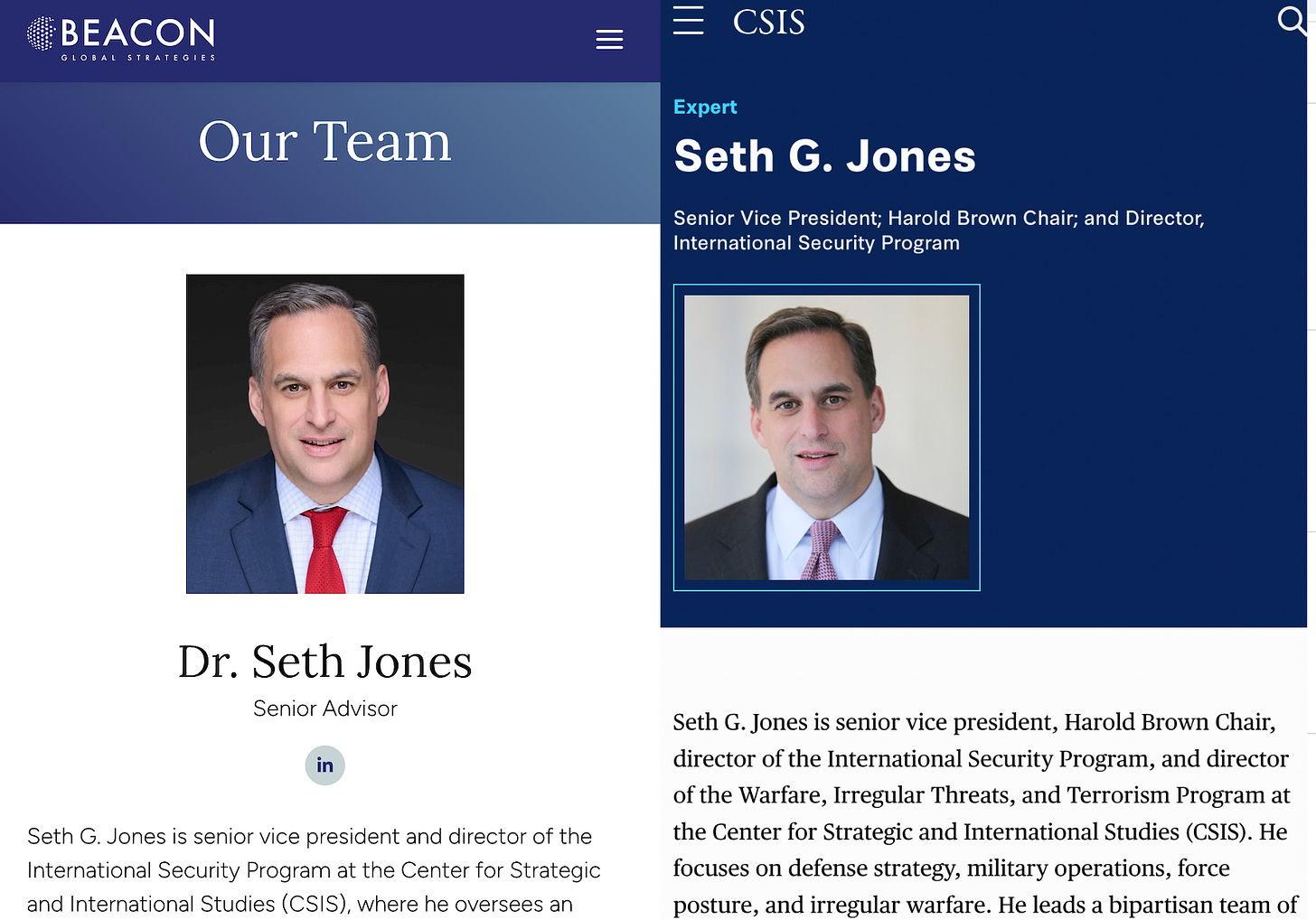By Lee Fang, Substack, 9/13/24

In the not too distant past, the New York Times eviscerated a set of establishment think tanks in Washington, D.C. The paper revealed documents and emails showing nonprofit research institutes how defense industry interests routinely and covertly influence the media and policymakers. The target of its reporting focused on a prominent think tank called the Center for Strategic and International Studies (CSIS).
“Think Tank Scholar or Corporate Consultant? It Depends on the Day,” ran one NYT headline. The story showed that a scholar at CSIS doubled as a security industry lobbyist who used the think tank to press his client’s interests. “How Think Tanks Amplify Corporate America’s Influence,” blared another NYT investigation, featuring internal emails unmasking CSIS for pushing military drone-friendly policies while raking in drone industry donations.
The NYT series on think tank corruption began ten years ago. Little has changed in terms of the behavior of defense industry-funded think tanks. Instead, the NYT has gone on to embrace them.
In its ongoing reporting on the Ukraine-Russia war and the debate over whether to fuel the conflict, the NYT routinely goes to CSIS for quotes to justify more weapons and more war. The latest flashpoint is the news that NATO powers are moving to likely approve Ukraine’s use of Army Tactical Missile System missiles, known as ATACMS, to strike deep into Russian territory, potentially targeting oil refineries, factories, and other infrastructure that serve a mix of military and civilian purposes. The move would amount to a major escalation that may provoke a wider war across Europe, strikes on U.S. assets, or even nuclear war.
President Vladimir V. Putin has said that such missile strikes from American-provided ATACMS into Russian territory would “mean that NATO countries — the United States and European countries — are at war with Russia.”
In reporting on the decision, the NYT did not speak to outside experts who raised concerns about a potential nuclear conflict. Instead, they quoted a single outside expert voice, a scholar from CSIS, to push back on any dangers and to argue that such strikes are par for the course:
“The strikes would help degrade Russian military capabilities, and Russia already uses Iranian, Chinese and North Korean weapons and components against targets in Ukraine,” said Seth G. Jones, a senior vice president with the Center for Strategic and International Studies.
Aside from the fact that this quote makes almost no sense – the North Korean weapons to Russia consist largely of short-range artillery rounds – the NYT is engaging in the same type of industry opinion laundering it once decried.
CSIS vice president Seth Jones doubles as an official at Beacon Global Strategies, a consulting firm that lobbies on behalf of the defense industry, with previous clients that include Raytheon.
As the NYT has previously reported, CSIS is funded and routinely directed by the largest defense contractors in the world. Lockheed Martin, the manufacturer behind the ATACMS missile system, is among the think tank’s largest corporate benefactors. As we’ve reported, Lockheed Martin stands to benefit financially from the war, citing $10 billion in opportunities.
Thanks for reminding me that Lee Fang is now more free to write what his instinct tells him. He must have been muttering Dr. MLK’s words when he quit/was fired.